Photos: Asteroid Vesta and NASA's Dawn Spacecraft
Dark Streaks on Huge Asteroid Vesta

This composite-color view from NASA's Dawn mission shows Cornelia Crater, streaked with dark materials, on the giant asteroid Vesta
Distribution of Vesta's Dark Materials, Southern View
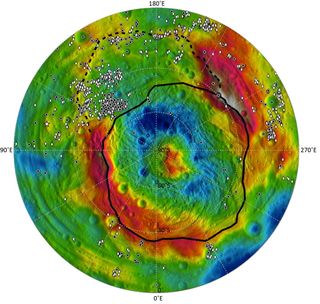
This map shows the distribution of dark materials throughout the southern hemisphere of the giant asteroid Vesta. Image released Jan. 3, 2013.
Vesta Dark Crater Rims

These mosaic images from NASA's Dawn mission show how dark, carbon-rich materials tend to speckle the rims of smaller craters or their immediate surroundings on the giant asteroid Vesta. The image on the left is Numisia Crater and the image on the right is a shallow, unnamed crater in the Sextilia quadrangle. Image released Jan. 3, 2013.
Vesta's Two Hemispheres
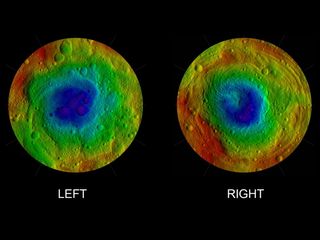
This image from NASA's Dawn mission shows the topography of the northern and southern hemispheres of the giant asteroid Vesta, updated with pictures obtained during Dawn's last look back. Around the time of Dawn's departure from Vesta in the late summer of 2012, dawn was beginning to creep over the high northern latitudes, which were dark when Dawn arrived in the summer of 2011.
Full View of Vesta
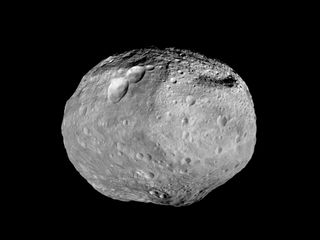
This mosaic synthesizes some of the best views Dawn spacecraft had of the giant asteroid Vesta. Dawn studied Vesta from July 2011 to September 2012. The towering mountain at the south pole — more than twice the height of Mount Everest — is visible at the bottom of the image. The set of three craters known as the "snowman" can be seen at the top left.
Dawn's Farewell portrait of Vesta

This image is from the last sequence of images NASA's Dawn spacecraft obtained of the giant asteroid Vesta, looking down at Vesta's north pole as it was departing Sept. 5, 2012.
Shadows on Vesta
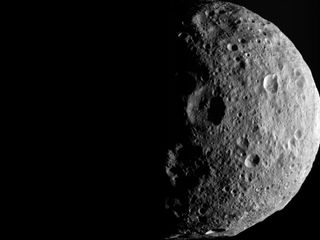
The shadowy outlines of the terrain in Vesta's northern region are visible in this image from NASA's Dawn spacecraft. The image comes from the last sequence of images Dawn obtained of the giant asteroid Vesta as it departed the giant asteroid Sept. 5, 2012.
Get the Space.com Newsletter
Breaking space news, the latest updates on rocket launches, skywatching events and more!
Vesta's Internal Structure
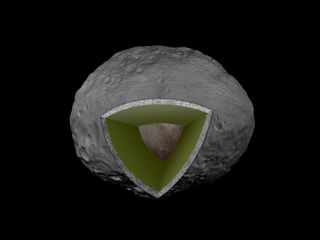
Dawn shows that Vesta has an iron core that is about 68 miles (110 kilometers) in radius, suggesting that Vesta completely melted in its early history, allowing iron to sink to form the core and producing a basaltic crust.
Vesta in Perspective
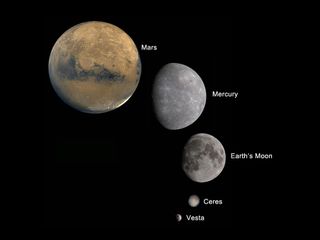
The giant asteroid Vesta is shown here as the smallest body among other similar bodies in the solar system: Mars, Mercury, Earth's moon and the dwarf planet Ceres.
Vesta in the Infrared

This global, colorized image of the giant asteroid Vesta from NASA's Dawn mission reveals how the minerals are distributed on the surface.
Mineral Diversity at Vesta's South Pole
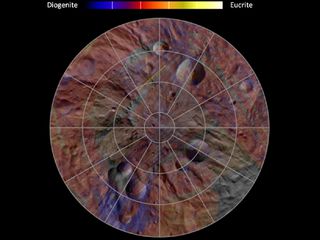
This image, made from data obtained by NASA's Dawn spacecraft, shows the mineral distribution in the southern hemisphere of the giant asteroid Vesta. The data used to create this image were obtained in August 2011.
Join our Space Forums to keep talking space on the latest missions, night sky and more! And if you have a news tip, correction or comment, let us know at: community@space.com.

Space.com is the premier source of space exploration, innovation and astronomy news, chronicling (and celebrating) humanity's ongoing expansion across the final frontier. Originally founded in 1999, Space.com is, and always has been, the passion of writers and editors who are space fans and also trained journalists. Our current news team consists of Editor-in-Chief Tariq Malik; Editor Hanneke Weitering, Senior Space Writer Mike Wall; Senior Writer Meghan Bartels; Senior Writer Chelsea Gohd, Senior Writer Tereza Pultarova and Staff Writer Alexander Cox, focusing on e-commerce. Senior Producer Steve Spaleta oversees our space videos, with Diana Whitcroft as our Social Media Editor.
